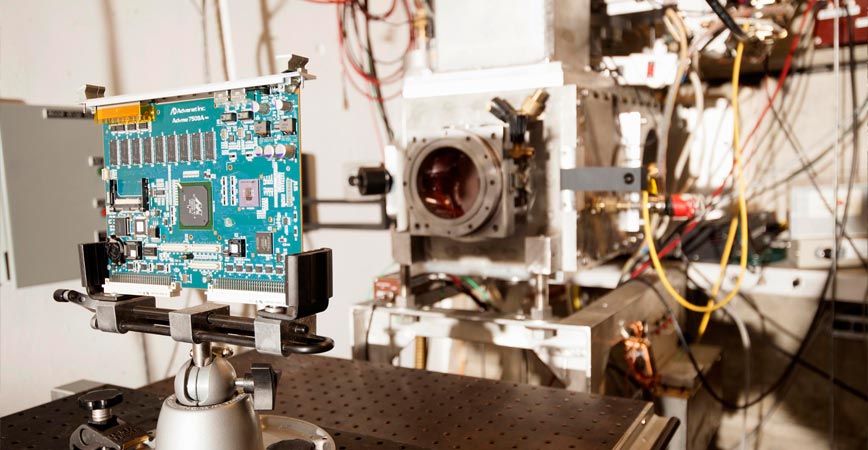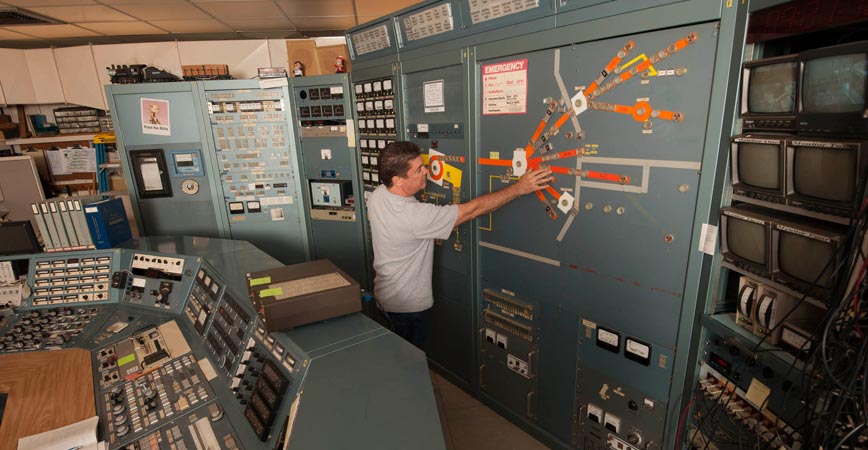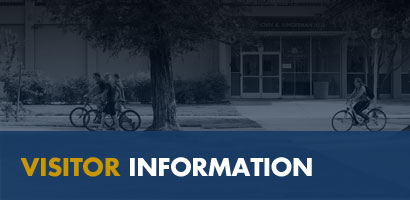Crocker Nuclear Laboratory is home to a 76-inch isochronous cyclotron built by the UC Davis physics department in 1966 in collaboration with Oak Ridge National Laboratory and the Naval Research Laboratory. Today researchers, engineers and medical professionals take advantage of the unique and versatile capabilities of the machine, one of the few of its kind still in use.
A cyclotron with unique capabilities
Originally designed for research, CNL’s cyclotron can produce high-intensity, external beams of light ions that can be tuned to energies between 4 MeV and 67.5 MeV. The primary particles accelerated are protons, deuterons, helions and alphas. Neutron beams can also be provided.
For applications that use low-energy beams, the machine’s tunability and energy levels provide a distinct advantage over most other cyclotrons, which operate at significantly higher, fixed energy points requiring degraders for energy level adjustment. Throughout its range, CNL’s cyclotron delivers a high quality, stable beam with lower energy spread and emittance than beams with energy levels adjusted by degraders.
Central location and a highly skilled technical team
Crocker Nuclear Laboratory is centrally located on the main UC Davis campus, making it easily accessible to faculty and students as well as to researchers and engineers from industry, government agencies and other academic institutions. Our expert operations and maintenance teams have decades of experience in providing consistent, precisely calibrated particle beams tailored to the needs of each user.
Many users, many uses
We encourage the use of the cyclotron by researchers and engineers both within and outside the UC system. Current applications include:
- Studying the effects of radiation on electronics used in space missions. Private industry, NASA and the Naval Research Laboratory are among those who use CNL’s facilities to test the effects of radiation exposure on electronic equipment destined for deployment in spacecraft. The cyclotron’s tunability at lower energy levels is ideal for simulating a range of radiation environments encountered in space.
- Treatment of ocular melanoma. Since 1994, more than 1,600 patients have been treated at CNL for ocular melanoma, a rare cancer of the eye. The low energy, high quality and stable proton beam produced by our cyclotron is ideally suited for the treatment of this disease. The ocular melanoma program at CNL is administered through UCSF’s Radiation Oncology department.
- Nuclear physics. The cyclotron was designed as a highly sensitive and tunable nuclear physics research tool. Current uses include:
- Testing critical components of particle detectors in CERN’s Large Hadron Collidor (UC Davis High Energy Physics group);
- Nuclear nonproliferation research and detection development (Lawrence Livermore National Laboratory);
- The cyclotron’s newly-developed spallation neutron beam line is being used to develop detectors to look for dark matter (UC Davis researchers and students);
- Training in experimental methods for nuclear physics (UC Davis students);
-
Development of high specific activity 119-Te/119-Sb as a chelated radioisotope for use in targeted radiotherapy (Los Alamos National Laboratory).
UC Davis promotes Diversity, Equity and Inclusion, and the Crocker Nuclear Lab cultivates a work environment where all individuals can feel welcome, respected, supported and valued.
To learn more: https://diversity.ucdavis.edu/






